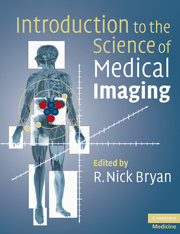3 - How to analyze an image
Published online by Cambridge University Press: 01 March 2011
Summary
Having defined the universe and nature, introduced concepts of imaging portions thereof, and outlined how to make such an image, let us now address the issue of how to analyze an image. Imaging is not necessarily science. The ancients imaged the heavens for eons, but performed no science. Instead, they fantasized animals and mythical creatures in the heavens and created the constellations (Figure 3.1). The ancients practiced non-scientific astrology, not scientific astronomy. Perhaps the first example of modern scientific imaging was Galileo's discovery and description of the moons of Jupiter in 1610 (Figure 1.25). Galileo used a new imaging tool, the telescope, which improved the imaging capabilities of the naked eye by increasing spatial resolution. This technology allowed him to image previously invisible, small, faint objects in the vicinity of the even-then known planet of Jupiter. At this point Galileo had performed novel imaging, but not science. He had a choice as to what to do with this new information. He could have mythologized the images he saw and empirically filled the telescopic sky with more fantastic creatures. Fortunately, he chose the heretofore unorthodox scientific approach. Instead of imagining monsters, he used his new imaging tool to make localized measurements of energy (visible light) in the spatial vicinity of Jupiter over time (several weeks). He exquisitely displayed these observations with simple images – drawings. Importantly, he then applied the scientific method to first hypothesize and then prove mathematically that these faint light signals were from four previously unknown moons.
Information
- Type
- Chapter
- Information
- Introduction to the Science of Medical Imaging , pp. 82 - 116Publisher: Cambridge University PressPrint publication year: 2009
